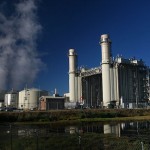Natural gas continued to accumulate losses for a third consecutive day to drift further from a recently-hit four-month high on speculations of incoming warmer weather over the northern U.S. later this month.
On the New York Mercantile Exchange, natural gas for delivery in December lost 1.34% to $4.190 per million British thermal units by 9:53 GMT. Prices ranged between $4.163 and $4.222. The contract fell 3.56% on Monday to $4.255 per mBtu, its first loss since October 27th, followed by a 0.19% drop on Tuesday.
According to NatGasWeather.com, natural gas demand in the U.S. over the next seven days will be high and at times very high, compared to normal, with a neutral weather trend for the November 19-25 time span.
A strong arctic blast continues its reign over the north-central U.S., holding temperatures below freezing levels. Light snow accumulation is expected to form alongside the cold front and over the eastern slopes of the Rockies, with overnight temperatures, including the northern Plains, projected to reach single digit numbers or below the zero mark. Over the Midwest and the interior Northeast temperatures will drop to 10s and 20s.
The eastern U.S. coastline will enjoy a couple more days of mild weather, NatGasWeather.com reported, before the colder air arrives later this week. By Saturday, with the exception of the southwestern U.S., colder than normal temperatures will affect the entire country.
Another strong cold blast is expected to arrive into the northern U.S. early next week, bringing cold Canadian air, temperatures below the normal and areas of snowfall. Periods of colder temperatures can occur in the southern U.S. as cold blasts push their way through the U.S. Conversely, the western U.S. will reach normal or slightly better temperatures as high pressure dominates over the region.
However, the colder weather systems are expected to retreat back to the Canadian border during the next weekend, as milder weather coming from the Pacific Ocean may flow into the northern U.S.
Temperatures
According to AccuWeather.com, readings in New York on November 17th will range between 32 and 46 degrees Fahrenheit, below the average of 41-53, before dropping to 32-42 degrees three days later. Chicago will slide to 34 degrees on November 15th, 15 below usual, and will range between 27 and 35 degrees on November 20th.
Down South, temperatures in Houston will max out at 53 degrees on November 14th, 20 below normal, before increasing to 57 degrees on November 18th. On the West Coast, the high in Los Angeles on November 13th will be 70 degrees, 4 below than normal, before increasing to as much as 74-75 degrees on November 16-17.
Supplies
The Energy Information Administration reported on Thursday that US natural gas stockpiles rose by 91 billion cubic feet in the week through October 31st, exceeding analysts’ projections for a jump of 85-87 bcf. This was the 29th straight above-average weekly build, sharply exceeding the five-year average gain of 42 billion cubic feet and last year’s gain of 35 bcf during the comparable week.
Total gas held in US storage stood at 3.571 trillion cubic feet, narrowing its deficit to the five-year average of 3.832 trillion by 1.4% to 6.8% from a week earlier. Gas stockpiles were 6.2% below year-ago levels.
This week’s build is expected to probably be the last for the year that would provide a gain on deficits, with an early estimate of the high 30s bcf.
Pivot Points
According to Binary Tribune’s daily analysis, December natural gas futures’ central pivot point stands at $4.226. In case the contract penetrates the first resistance level at $4.332 per million British thermal units, it will encounter next resistance at $4.416. If breached, upside movement may attempt to advance to $4.522 per mBtu.
If the energy source drops below its first support level at $4.142 per mBtu, it will next see support at $4.036. If the second key support zone is breached, the power-station fuel’s downward movement may extend to $3.952 per mBtu.





